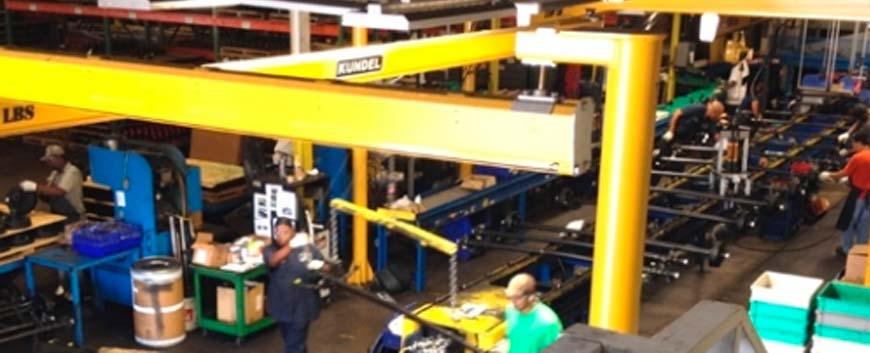In different industrial settings, overhead factory cranes are important because they increase the quality of operation. The performance of a crane depends on how well a given operation is suitable. Cranes provide options for complex systems in a variety of configurations. You must know if an overhead crane is appropriate for commercial use. The cranes have evolved considerably since their formation. It is crucial to know how different styles function. kundel.com sells every type of overhead factory cranes.
What is an overhead factory crane?
An overhead crane is a lifting system designed to reverse, forward, and side-by-side loads. It functions in a specific place in the overhead room. Therefore, a crane may be used open or sealed indoors.
An overhead crane has a terminal truck that attaches to a horizontal roller. On the other side, the girder holds a bridge beam that drives the crane. A house on the beam travels in various ways based on the specifications.
Overhead crane types that we provide:
An overhead crane will make a big difference in the handling process of your products. Cranes minimize injuries in the workplace because they remove the need for people transporting freight in the factory.
By choosing the best crane to meet your applications, you will gain all these advantages. Here are numerous styles to pick from.
Overhead Bridge cranes:
The most popular models on the market are overhead bridge cranes. There are two beams in a bridge crane that are attached to the building’s support system. This crane is available in two configurations: one and two girders. A double crane and a single crane have the power nearly equivalent.
Gantry cranes:
In a portico, the rotor is on the legs instead of hanging on a beam. The legs may be placed on the floor or underground. Gantry cranes can be used outdoors so the Girder does not need to be attached to the support system of the frame. If in a shipyard you need a crane, a portal is the correct device.
Monorail cranes:
A monorail crane is unlike the others because it has no girder. The crane is fitted with an I-beam which pushes the hoist. A typical single-wheeled crane makes a straight line load, but rails can be tailored to accommodate the application.
Jib cranes:
There is no runway framework on a jib crane; it mounts on a wall with a boom stretching over the ground. These types of overhead cranes may also be stand-alone, which means that the system has a single support column. The crane swings from 180o to 360o in a circular motion.
How does the overhead factory crane work?
An overhead crane has a truck to attach to a horizontal rod. On the other side, the girder holds a bridge beam that drives the crane. A hoist attached to the beam travels in various directions and a hook at the end is attached to raise the load.
The hook is one of the important features of a crane as it defines the load power. The kundel.com cranes are ideal to reduce risks when an oversize crane is operated using their remote control system. You can hook on or remotely release a load that minimizes hazards. The patented Evo cranes can collect between 2.5 and 25 tonnes. The underside of the hook comes with a magnet that pulls the sling to correctly align it to rise. The kundel.com hook with master ties, cable slings, cloth slings, cord slings, and wide bags is available for use.

